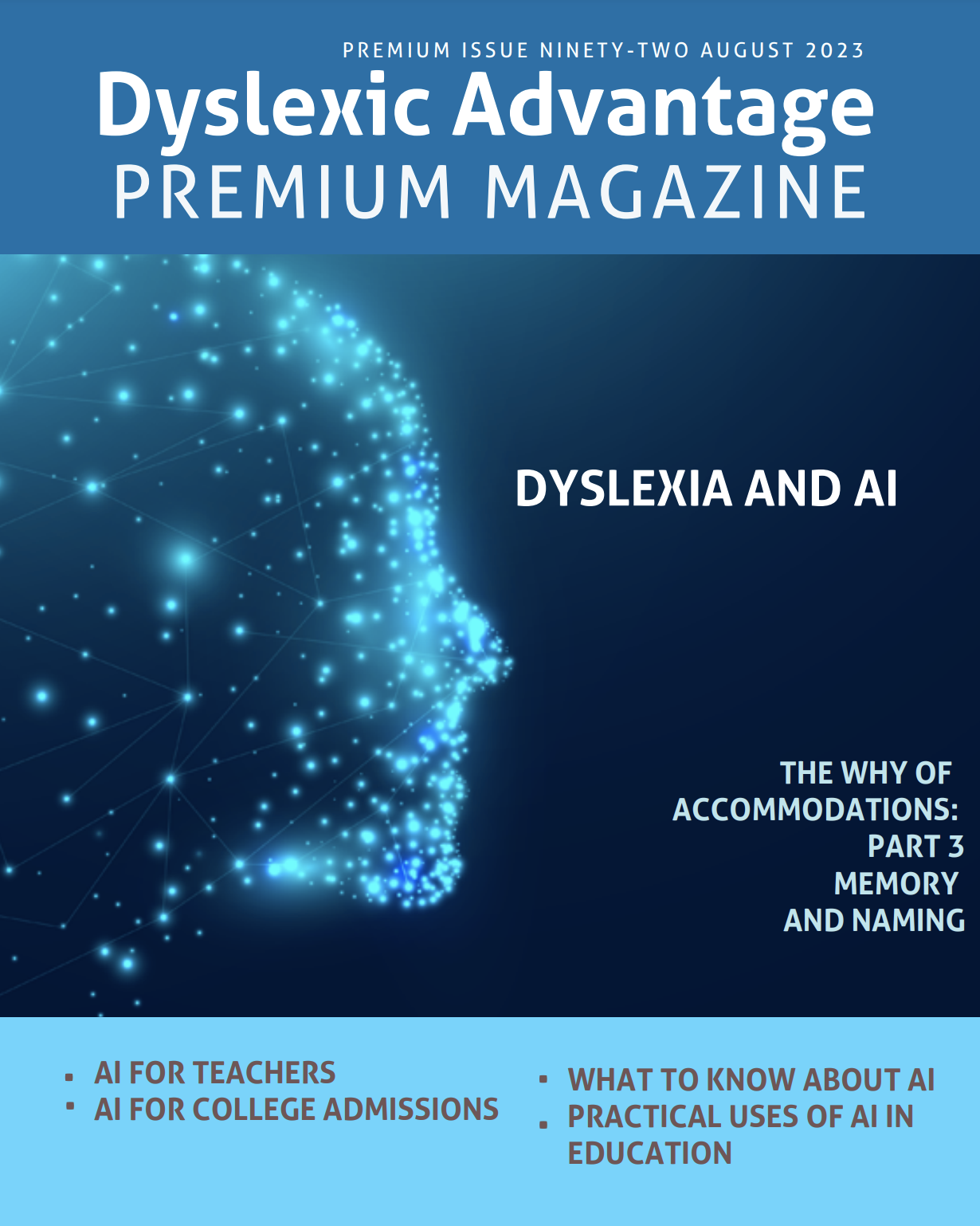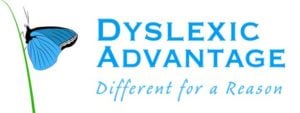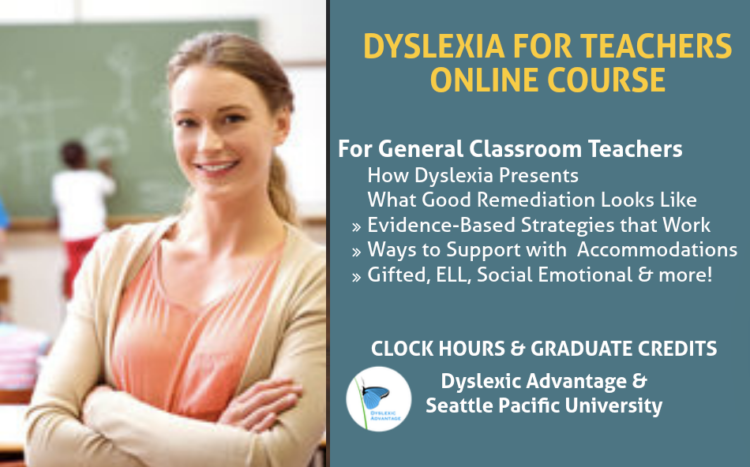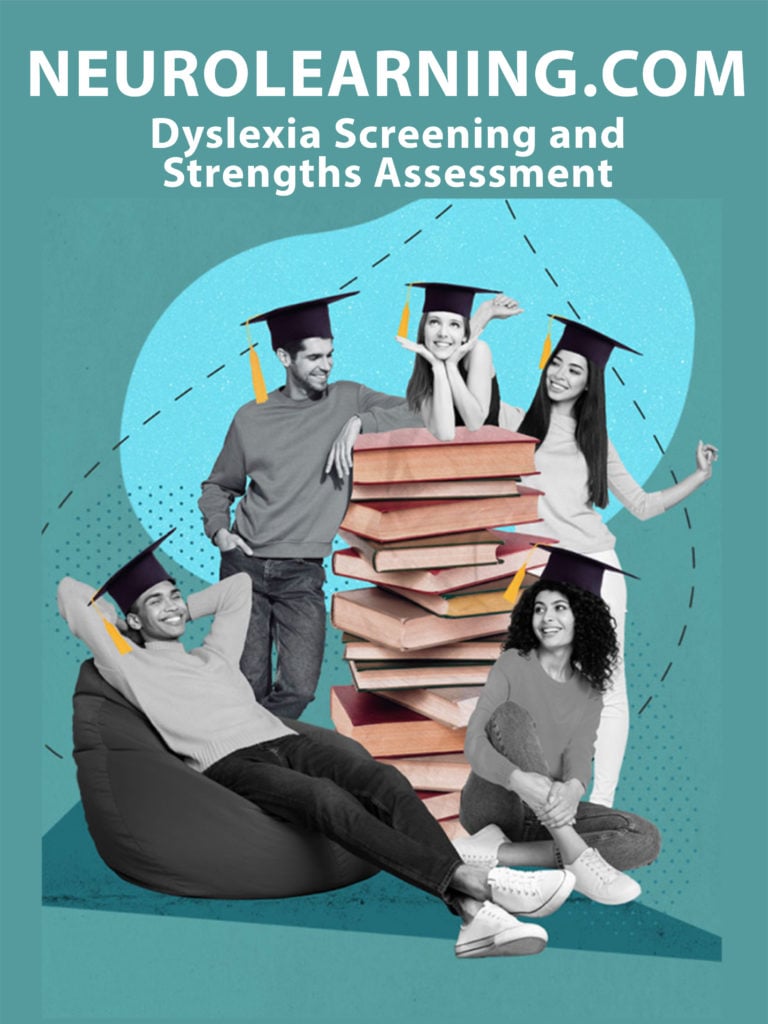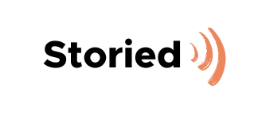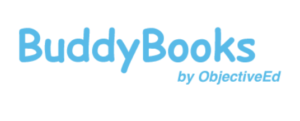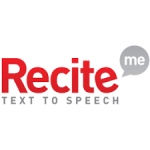A young filmmaker, Lauren, interviewed for our movie shared that she had trouble putting her ideas into words. After the camera had shut off, I told her that many people over the years shared exactly the same thing. Lauren shared that when she reads a book, she gets...
Question: Multilingual Dyslexic Adult: How Best to Learn English Grammar [Premium]
A multilingual member of this community (who is also dyslexic) asked us for advice about improving grammar in English. Grammar is something that non-dyslexic people may pick up effortlessly and without conscious awareness as they read and listen to native speakers (Implicit Learning). Unfortunately, grammar cannot be learned in such a passive way by most dyslexic people. As a result, it must be learned explicitly and likely with multisensory strategies. Rule-based learning of English grammar is difficult and inefficient for many dyslexic learners. It is possible that pairing with a dyslexia tutor who has expertise writing and grammar for dyslexic adults (including those in higher education) may be able to help you in a step-by-step fashion addressing complex sentence structure. I do know […]
What I Know Now About Learning a Foreign Language [Premium]
When I came across a remarkable article titled, “Dyslexia and Learning a Foreign Language: A Personal Experience,” I knew that I wanted to talk to the author. Charlann had the unique perspective of being both dyslexic and a speech language pathologist. She dodged the college level foreign language requirement by getting a bachelor’s degree in speech and theater and master’s degree in speech language pathology. “I no longer tell the truth about how long I have studied French because people cannot comprehend how I could have studied (for seven years) and…still struggle so severely with spoken and written language. I could not fluently retrieve basic structures or pronunciation patterns to communicate my thoughts in classroom discussions, so I tended to speak in sentence fragments and […]
Teaching the Schwa [Premium]
What is the schwa? The schwa sound is the most common sound in English and symbolized by the upside-down e in International Phonetic Alphabet and is pronounced like “uh” in words like “the”. It’s a maddening sound because it’s not really associated with any specific letter of the alphabet…and that affects spelling as well as reading aloud. Sarah’s Snippets Literacy Nest has a nice series of post on teaching the schwa. Emily recommends starting with “a” words like “alike”, “panda”, “soda”, or “Alaska” that say “uh” instead of the long a sound. Add a little kinesthetic action like thumping the table to make recognizing the schwa more memorable. Students may need to master stressed and unstressed syllables first; The Call […]
Learning Irregular Words [Premium]
Question: Why does dyslexia intervention focus so much on phonics and phonological awareness when so much of English doesn’t follow rules? Every comprehensive structured literacy program includes lessons and intensive practice with sight words and orthographic mapping as well as morphology (the study of words from the perspective of small meaning parts like prefixes, roots, and suffixes). So students undergoing remediation are actually becoming deep scholars of language. It can be pretty intense. Regular phonological patterns are learned first, then irregular words that don’t fall into classic phonics rules. For example, an open syllable is a syllable that ends in a vowel (the word “she”, for instance). The rule for open syllables is that the vowel is long. Closed syllables are syllables that are closed […]
Q & A: Bilingual and Dyslexic [Premium]
Question: Our 9 year old son is bilingual and also dyslexic. We have decided to allow him to attend a bilingual school with his older sister for cultural and family reasons. Will this harm his educational development? The school seems supportive, but does not have teachers trained to remediate dyslexia. There are many reasons why families choose to raise their children with two or more languages, not the least being ties to two cultures and communicating with extended family members. As you may be aware, language learning can be very difficult for some dyslexic students, leading them to seek waivers for foreign language instruction. That being said, we have known many families over the years who have done just as you plan to do. The […]
Language Teaching and Dyslexia: What About Exceptions to the Rules? [Premium]
The English language is especially difficult to learn if you are dyslexic – because about half of its words are not predictable by simple rules. So what to do? WORD FAMILIES Learning similar words in similar groups can be motivating for students because they learn many words at one time. Dyslexic students tend to be good at recognizing patterns, so approaches like these are well-suited toward dyslexic students. One site for word family lists can be found here. DON’T OVERSIMPLIFY THE RULES Problems usually arise when students are taught an oversimplified rule like “a silent e makes a vowel say its name”. The rule works for words like bake, bike, nose, and cute, but it doesn’t work for words like have or dance.
[…]Rapid Automatized Naming (RAN) and Its Impact on Dyslexia [Premium]
“Substantial evidence shows that dyslexic readers have problems with rapid naming of visual items. Early research assumed that this was a consequence of phonological processing deficits, but recent findings suggest that non-phonological processes may lie at the root of the association between slow naming speed and poor reading. The hypothesis that rapid naming reflects an independent core deficit in dyslexia is supported by the main findings: (1) some dyslexics are characterized by rapid naming difficulties but intact phonological skills; (2) evidence for an independent association between rapid naming and reading competence in the dyslexic readers, when the effect of phonological skills was controlled; (3) rapid naming and phonological processing measures are not reliably correlated. “ – Araujo et al. 2011 Rapid automatized naming or […]
Foreign Language Learning [Premium]
Q: HOW CAN I IMPROVE MY FLUENCY WITH A SECOND LANGUAGE? Recently, a member of this community asked about how to improve his fluency with a foreign language. He mentioned that he’d been trying to learn for the past 30 years, but only recently started making more progress with the app Yabla because it was visual and didn’t rely on audio alone. Yabla is an interactive video approach to foreign language learning that provides two channels of captions that can be shown or hidden and TV shows, music videos, documentaries, and interviews. A: I can see how Yabla can help with improving speed of listening. The videos provide context and the scenes may make the dialogues more memorable than if they were read […]
Dyslexia and Bilingualism [Premium]
There are many bilingual or multilingual families who are also navigating a path through dyslexia. Bilingual students with dyslexia usually have similar problems in both languages, but some languages are “easier” to learn if the phonology and spelling are more predictable. So functionally, it is possible for a student to appear dyslexic in one language, but not so dyslexic in another. The focus of this article, is not whether a student should elect to learn a second language, and if so, when, but rather what challenges and potential benefits that bilingual dyslexic students do have to look forward to if they ultimately master two languages and also have their dyslexia remediated. LATER BLOOMING If dyslexic students as a group are considered late blooming in general […]
How Not To Give Up On Learning A Second Language [Premium]
Learning second languages are difficult for many dyslexic students; foreign language waivers or substitutions are common, but in spite of this, many can learn other languages and even multiple languages if the goal is conversation. Writing and spelling second and third language can be more difficult, but also possible for many people. Students may be more successful if they able to study over a longer time and if they have learned more about the structure of language in their native tongue. In the video below, listen to 4 Hour Work Week guru Tim Ferriss (yes, he’s dyslexic) talk about how he learned to be able to converse in many foreign languages. The type of learning described, won’t necessarily make you a master of […]
READING FLUENCY: Phrase Cueing [Premium]
Once students have made significant progress with single word decoding, reading fluency practice can be rolled into reading practice with phrase cueing. HERE is a nice review of reading fluency approaches that includes a discussion of phrased reading. Phrase scooping or cueing involved the drawing of scoops underneath groups of words that go together in parts of a phrase. Combining scooped words with choral reading or echo reading can help students get practice with both reading and listening for phrases. Intervention Central has a Phrase Cued Text Generator, but it’s so-so. It’s better to break sentences into 3-6 word phrases to increase the ease of reading. From Steve Peha, check out the example below: Of course these shorter phrases also help with reading on a […]

![Um.. Trouble Finding the Right Words [Premium]](https://www.dyslexicadvantage.org/wp-content/uploads/2023/12/Um.-Finding-the-Right-Words-400x250.jpg)
![Question: Multilingual Dyslexic Adult: How Best to Learn English Grammar [Premium]](https://www.dyslexicadvantage.org/wp-content/uploads/2023/07/MULTILINGUAL-DYSLEXIC-ADULT-HOW-BEST-TO-LEARN-ENGLISH-GRAMMAR-e1690210823296-400x250.png)
![What I Know Now About Learning a Foreign Language [Premium]](https://www.dyslexicadvantage.org/wp-content/uploads/2023/05/What-I-Know-Now-About-Learning-a-Foreign-Language-Charlann-400x250.png)
![Teaching the Schwa [Premium]](https://www.dyslexicadvantage.org/wp-content/uploads/2023/05/Teaching-the-Schwa-Premium-1-1.jpg)
![Learning Irregular Words [Premium]](https://www.dyslexicadvantage.org/wp-content/uploads/2023/03/Dyslexic-Advantage-400x250.png)
![Q & A: Bilingual and Dyslexic [Premium]](https://www.dyslexicadvantage.org/wp-content/uploads/2023/01/bilingual-dyslexia-400x250.png)
![Language Teaching and Dyslexia: What About Exceptions to the Rules? [Premium]](https://www.dyslexicadvantage.org/wp-content/uploads/2022/10/Language-Teaching-and-Dyslexia-1-Dyslexic-Advantage-2.jpg)
![Rapid Automatized Naming (RAN) and Its Impact on Dyslexia [Premium]](https://www.dyslexicadvantage.org/wp-content/uploads/2021/12/Rapid-Automatized-Naming-357x250.png)
![Foreign Language Learning [Premium]](https://www.dyslexicadvantage.org/wp-content/uploads/2021/10/Foreign-Languages-400x250.png)
![Dyslexia and Bilingualism [Premium]](https://www.dyslexicadvantage.org/wp-content/uploads/2021/06/Dyslexia-and-Bilingualism-400x250.png)
![How Not To Give Up On Learning A Second Language [Premium]](https://www.dyslexicadvantage.org/wp-content/uploads/2021/06/Second-Language-400x250.png)
![READING FLUENCY: Phrase Cueing [Premium]](https://www.dyslexicadvantage.org/wp-content/uploads/2020/01/phrase-craze-3-400x250.jpg)
